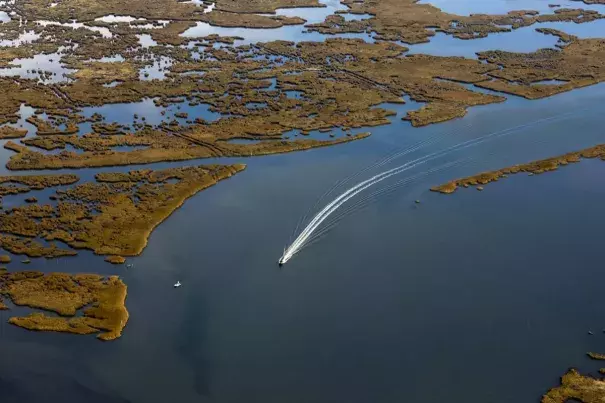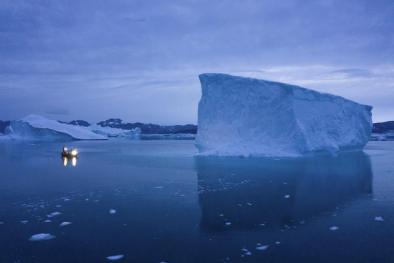'We're screwed': The only question is how quickly Louisiana wetlands will vanish, study says

Climate Signals Summary: Sea level rise due to climate change is driving flooding much further inland along low-lying areas and increasing the risk of coastline erosion.
Article Excerpt: Because of increasing rates of sea level rise fueled by global warming, the remaining 5,800 square miles of Louisiana's coastal wetlands in the Mississippi River delta will disappear. The only question is how quickly it will happen, says a new peer-reviewed study published Friday in Science Advances.
“This is a major threat not only to one of the ecologically richest environments of the United States but also for the 1.2 million inhabitants and associated economic assets that are surrounded by Mississippi Delta marshland,” the report concludes.
The new study reviewed the rates of sea-level rise that caused wetlands to disappear along Louisiana's coast during the 8,500-year history of the current Mississippi River delta. It found that at rates of relative sea level rise -- the combination of rising water and ground subsidence -- of between 6 and 9 millimeters a year , ancient coastal marshes would turn into open water within 50 years. At rates of 3 millimeters a year, it would take a few centuries.
The globally averaged rate of sea-level rise between 2006 and 2015 was about 3.58 millimeters a year, and that doesn't include local subsidence rates along Louisiana's coast. As a result, the state's wetlands already have exceeded a tipping point, the study's authors say.
"What it says is we're screwed," said lead author Torbjörn Törnqvist, a Tulane University geology professor, in an interview. "The tipping point has already happened. We have exceeded the threshold from which there is basically no real way back anymore, and there probably won't be a way back for a couple of thousand years."
...
"It's important to highlight the fact that it still depends on our actions," Törnqvist said. "If we take appropriate actions and we can keep that rate of sea-level rise at least a little bit in check, it's likely the wetlands are still going to drown eventually, but maybe over centuries."
Those actions include reducing greenhouse-gas emissions worldwide to keep global temperatures closer to where they are now, which is about 1.5 degrees warmer than in the pre-industrial era, he said. And executing the state's coastal Master Plan of hurricane protection and wetland restoration projects, including plans to build major sediment diversions to help keep wetlands above water.
...
Bren Haase, executive director of the state's Coastal Protection and Restoration Authority, said the new study's findings are not surprising. The 2017 update of the coastal Master Plan estimated sea level rise alone through 2067 would range from a low of 8.6 mm per year to a high of 16.6 mm -- higher than the assumptions the paper uses.
...
And he [Hasse] pointed out that Gov. John Bel Edwards earlier this year announced that CPRA would embark on a program to bring the state's oil and gas and petrochemical industry players together to find ways of reducing or permanently storing the state's carbon emissions, specifically because of the role those emissions play in driving sea-level rise.
While that effort has been delayed by the COVID-19 pandemic, Haase said he expects meetings to begin later this year.
...
During the past 300 years, human changes to the Mississippi River, including the construction of numerous dams along the river's tributaries above Louisiana and the construction of levees along its path in the state, have halved the amount of new land-building sediment the river delivers to the state's wetlands. The construction of more than 10,000 miles of oil and gas canals and navigation waterways, and the extraction of oil and gas from beneath the land's surface have speeded subsidence.
Meanwhile, the dramatic increases in carbon dioxide and other greenhouse gases released into the atmosphere during the past 150 years have fueled rising temperatures that have increased ocean water heights by swelling individual water molecules. Sea-level rise has been compounded by the water added to the seas from the melting of glaciers and polar ice caps.
Related Content






